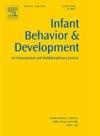从出生到三岁的共情发展:2000年到2025年的知识进步。
IF 2
3区 心理学
Q3 PSYCHOLOGY, DEVELOPMENTAL
引用次数: 0
摘要
移情能力在社会生活中起着重要的作用,支持社会关系的形成和维持,并激励人们帮助他人。研究共情的早期发展,对于推进对共情的理论认识和设计促进共情的干预措施都是有价值的。在过去的25年里,人们对从出生到三岁的同理心发展的研究越来越感兴趣,这导致了知识和理论的实质性进步,也引发了一些持续的争论。这里我们回顾一下这些发展。首先,我们对共情中涉及的自下而上和自上而下的主要过程进行了综合概述,以及它们可能产生的不同反应。然后,我们回顾了在婴儿期和幼儿期积累的关于共情的每一个组成部分/亚型的知识,通过解决:(i)替代性情绪唤醒的早期发展;(ii)认知共情——理解他人的情绪;(三)他人导向共情何时出现?一场正在进行的理论辩论被提出,包括主要的分歧和对经验证据的批判性评估;发展更复杂的关切形式;(五)早期共情的个体差异。最后,我们总结了未来研究的重要挑战和开放性问题。本文章由计算机程序翻译,如有差异,请以英文原文为准。
Empathy development from birth to three: Advances in knowledge from 2000 to 2025
Empathic abilities serve important functions in social life, supporting the formation and maintenance of social bonds and motivating people to help others. Studying the early development of empathy is valuable, both for advancing theoretical understanding of empathy and for designing interventions to promote it. The past 25 years have seen increased interest in studying empathy development from birth to three, leading to substantial advancements in knowledge and theory, as well as to some ongoing debate. Here we review these developments. First, we provide an integrative overview of the main bottom-up and top-down processes involved in empathy, and the different responses they can yield. We then review accumulated knowledge regarding each of these component/subtypes of empathy during infancy and early childhood, by addressing: (i) The early development of vicarious emotional arousal; (ii) Cognitive empathy – understanding others’ emotions; (iii) When does other-oriented empathy emerge? An ongoing theoretical debate is presented, including the main points of disagreement and critical evaluation of empirical evidence; (iv) Development of more sophisticated forms of concern; and (v) Individual differences in early empathy. We conclude with a summary and important challenges and open questions for future research.
求助全文
通过发布文献求助,成功后即可免费获取论文全文。
去求助
来源期刊

Infant Behavior & Development
PSYCHOLOGY, DEVELOPMENTAL-
CiteScore
4.10
自引率
4.80%
发文量
94
期刊介绍:
Infant Behavior & Development publishes empirical (fundamental and clinical), theoretical, methodological and review papers. Brief reports dealing with behavioral development during infancy (up to 3 years) will also be considered. Papers of an inter- and multidisciplinary nature, for example neuroscience, non-linear dynamics and modelling approaches, are particularly encouraged. Areas covered by the journal include cognitive development, emotional development, perception, perception-action coupling, motor development and socialisation.
 求助内容:
求助内容: 应助结果提醒方式:
应助结果提醒方式:


